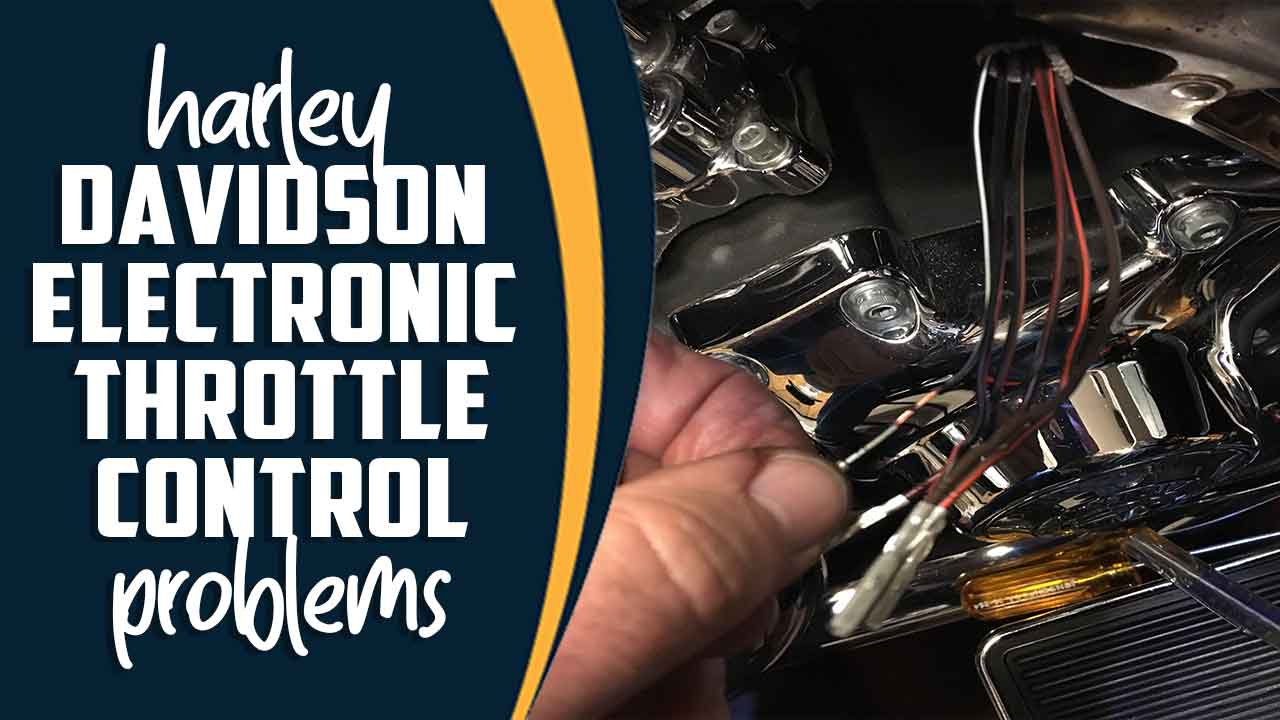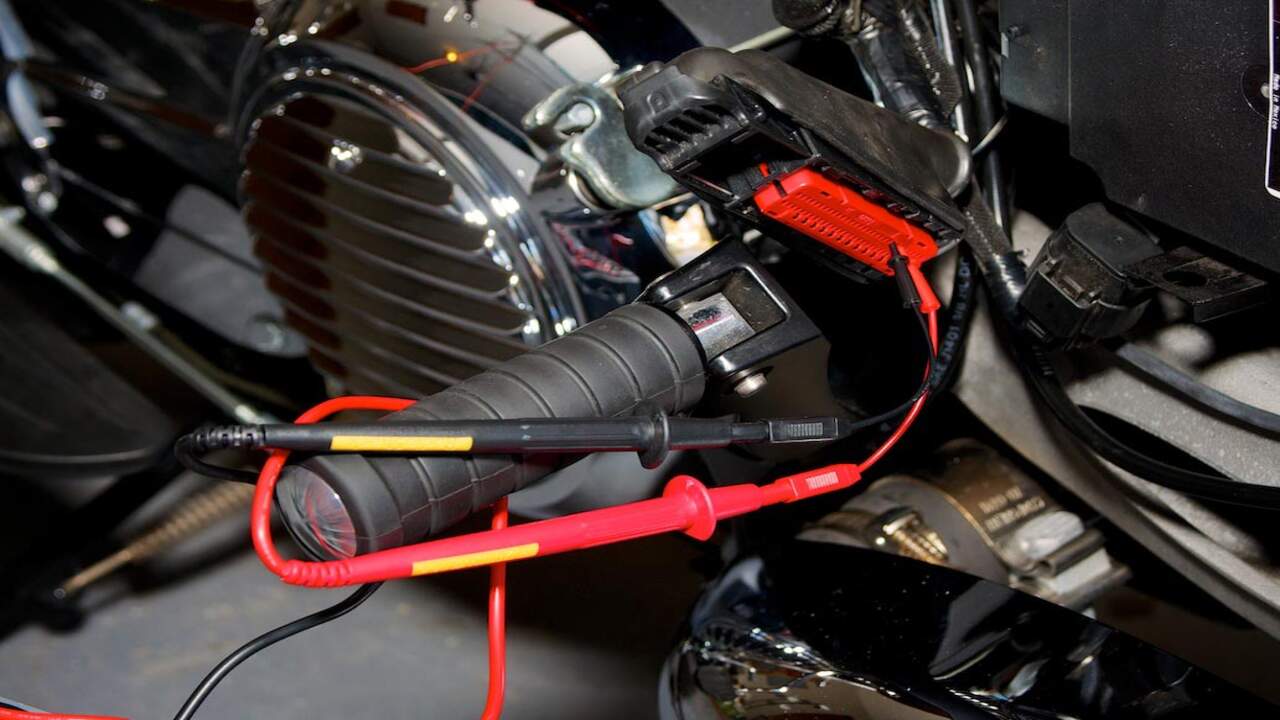Harley Davidson has long been known as a pioneer in the motorcycle industry, with a rich history and loyal following. However, even the most reputable companies encounter challenges, and one of the most notable issues plaguing Harley Davidson in recent years has been their electronic throttle control.
This advanced system, which allows for precise control and responsiveness of the motorcycle’s acceleration, has faced numerous complaints and recalls due to malfunctions and safety concerns. As a result, many riders have expressed frustration and disappointment with their Harley Davidson experience.
Here, we will take an in-depth look at the electronic throttle control problems faced by Harley Davidson and examine the potential causes and solutions. We will also discuss Harley Davidson electronic throttle control problems.

Harley Davidson Electronic Throttle Control Problems And Their Solutions

Harley Davidson Electronic Throttle Control (ETC) problems can frustrate motorcycle owners. Some common issues include throttle lag, unresponsive acceleration, and intermittent loss of power. However, there are solutions available to address these problems.
One possible solution is to recalibrate the ETC system, which involves resetting the throttle position sensor and idle control system. Another option is to clean or replace the throttle body, as a dirty or faulty throttle body can cause ETC issues. Scroll down to get details on Harley Davidson electronic throttle control problems.
1.Limited Performance Mode (LIMP)

One common issue Harley Davidson owners may encounter with their electronic throttle control is the Limited Performance Mode or LIMP. This mode activates when the motorcycle’s throttle control system detects a malfunction or fault.
When LIMP mode is activated, the motorcycles may be limited, and the rider may experience reduced power and acceleration. It is important to address any electronic throttle control problems promptly and have them diagnosed and repaired by a qualified technician to ensure optimal performance and safety while riding a Harley Davidson motorcycle.
Possible Solution:
You need to know what code is visible on the odometer when you get such a problem. There are solutions for most error diagnostic trouble codes online. For Limp mode, you will usually get the P1510 code. You will get this code if the throttle position sensor (TPS) or twist grip sensor (TGS) fails to perform.
Usually, the wire harness reaches the injectors behind the air cleaner. But a Limp can happen if it touches the cylinder fins between the front and rear jugs. You can tape a wire wiring harness and get a long-term solution from Limp.
2.Power Management Mode

A defective ETC can cause a power management failure mode (P1511 error code) in Harley Davidson motorbikes. Usually, you will get a reduced response to grip throttle sensor input. When this problem appears, the throttle grip plate actuator will return to an unexpected position like “idle det”nt” or “lim”-home”.” It will”provide sufficient torque to get around 40 km/h (25 mph) or traffic speed. (Source)
Possible Solution:
You need to check the condition of the throttle plate actuator. You may need to repair or replace it if it has any wear and tear. The throttle plate actuator will be available in motorbike shops at around $20 to $25. Thus, maintenance of the ETC system isn’t expensive.
3.Forced Shutdown Mode

You may get a P1512 error code due to defective electronic throttle control. This code refers to forced idle or shutdown mode. Usually, it happens for the failure of one or both twist grip magnetic sensors, TGS validation error, and brake switch failure.
As a result, the throttle control actuator (TCA) gets de-energized, and the throttle plate is forced to gain a “fast idle” “position. “thus, the engine must meet the high idle speed or shut down unexpectedly.
Possible Solution:
You should check if the TGS brake switch works well to avoid forced shutdown mode. As it happens, replacing the TGS brake switch is your only solution. Replacing the TGS brake ignition switch at home can be a little trickier. So, we suggest you call a professional and hand over the responsibility. You can replace the TGS brake switch for less than $50.
4.Throttle Stuck

Dealing with a stuck throttle on your Harley Davidson can be frustrating, but solutions exist. One cause is dirt or debris in the throttle housing, which can be resolved by cleaning and removing obstructions. Another possible cause is a faulty throttle cable or sensor, requiring replacement for proper functionality.
Promptly addressing a stuck throttle is crucial for motorcycle poor engine performance and safety. If unsure how to fix it, consulting a professional Harley Davidson mechanic is recommended.
Possible Solution:
You should check the cable for any wear or tear. Often, older wires may need to be corrected. Also, the wires can wear out. Then, replace it if required. If you find any loose wiring issues, try connecting it. It may solve the stuck throttle problem soon.
If the problem persists, check if the TPS is working correctly. The TPS may have the wrong setting. So, adjusting it should solve the throttle problem.
5.A Jerky Throttle
Harley Davidson riders may face a jerky throttle, which is not only frustrating but also poses potential risks. It can affect the bike’s responsiveness and disrupt the smoothness of the ride. Possible causes include throttle position sensor issues, faulty Sensors ECM, or problems with wiring and Poor connections.
To resolve this, it is advised to check for error codes using a diagnostic tool. If no codes are found, cleaning the throttle body, replacing the throttle position sensor, or seeking professional help may be necessary to address the root cause of the jerky throttle.
Possible Solution:
Firstly, you must ensure that the throttle position sensor is working correctly. Next, check the throttle cable to identify its wear and tear signs. You can replace it to solve the issue quickly. Lastly, repair the intake system after inspecting it if you find any air leaks.
Harley Throttle Position Sensor (TPS) Problem
It is connected to ETC, so it would be better if you knew about them, too. TPS controls or regulates the fuel supply and flows to the engine. Also, it is responsible for direct signal output to the fuel tank injection system. You can identify if the TPS is bad, which leads to ETC problems in these ways:
- A bad TPS may indicate your bike fails to remain steady when you are idling it. In such conditions, the engine doesn’t get sufficient fuel, and TPS doesn’t report. Hence, it doesn’t for not reporting that the TPS is damaged.
- TPS may be bad if you cannot get correct fuel readings to the bike’s engine ECU as a rebike. You get your bike idle even if you try to throttle more. Even the bike engine may shut off due to this issue.
There are a couple of causes of TPS problems, such as vibration, excessive operating temperature, and repeated throttle use. The consequences are pretty annoying as you may get poor fuel efficiency economy or restricted engine performance from the bike.
Tips To Avoid Electronic Throttle Control Problems

To avoid electronic throttle control problems with your Harley Davidson. Over a dozen times, dirt and debris can build up on the throttle body, affecting its performance. Loose or corroded electrical connections can cause issues with the electronic throttle control system.
Harley Davidson provides recommended maintenance schedules for their motorcycles. By following these tips, you can help prevent electronic throttle control problems and ensure a smooth riding experience on your Harley Davidson motorcycle. Here are some tips to keep in mind:
- Regularly inspect and clean the throttle body
- Check for loose connections
- Use quality fuel
- Follow recommended maintenance schedules
- Seek professional assistance if needed
Benefits of Electronic Throttle Control (ETC)

People often call the ETC of Harley Davidson a ride-by-wire” system because “the throttle is electronically controlled rather than managed mechanically. The core purpose of ETC was to help regulate the Harley Davidson motorbike’s acceleramotorbike’sceleration. As a result, the rider gets a smoother, more consistent ride.
There are several benefits of having a healthy ETC in a Harley Davidson motorcycle. It includes improved fuel economy, smoother acceleration, and improved safety.
Fuel Efficiency
Electronic Throttle Control (ETC) offers several benefits, including improved fuel efficiency. ETC systems optimize engine performance by precisely regulating the air and fuel entering the combustion chamber, resulting in more efficient combustion and reduced fuel consumption.
Additionally, ETC eliminates the need for a mechanical throttle cable, reducing friction and improving throttle response for even greater fuel efficiency. These systems often include features like idle speed control and cruise control, helping drivers maintain a steady speed and minimize unnecessary fuel consumption. Ultimately, Electronic Throttle Control not only saves money at the pump but also reduces environmental impact.
Lesser Emissions
Electronic throttle control (ETC) offers numerous benefits, including emission reduction. By precisely managing air and fuel intake, ETC systems enhance combustion and fuel efficiency. This leads to lower greenhouse gas emissions and a decrease in harmful pollutants like nitrogen oxides and particulate matter.
ETC technology is vital for automakers to comply with strict global emissions standards, promoting a cleaner environment. Embracing electronic throttle control ensures our vehicles contribute to emission reduction and protect the planet.
Better & Smoother Acceleration
Electronic throttle control (ETC) offers numerous benefits, including emission reduction. By precisely managing air and fuel intake, ETC systems enhance combustion and fuel efficiency. This leads to lower greenhouse gas emissions and a decrease in harmful pollutants like nitrogen oxides and particulate matter.
ETC technology is vital for automakers to comply with strict global emissions standards, promoting a cleaner environment. Embracing electronic throttle control ensures our vehicles contribute to emission reduction and protect the planet.
Enhanced Safety
Electronic Throttle Control (ETC) offers enhanced safety by electronically controlling the throttle, allowing for precise power output control. This results in improved acceleration response, stability, and safety during maneuvers like cornering or overtaking. ETC systems also include fail-safe modes to prevent unintended acceleration or engine stalls. Overall, ETC ensures a safer and more enjoyable driving experience.
Conclusion:
Replacing Harley Davidson ETC is a costly investment. Hence, you better follow our suggestions on Harley Davidson electronic throttle control problems to solve its common problems quickly. Also, always maintain your HD motorbike and its ETC system in optimal condition.
If you still face Harley Davidson electronic throttle problems, follow your guidelines to fix them efficiently and within your budget. Regular maintenance, proper calibration, and keeping an eye on software updates are essential for ensuring the smooth functioning of the electronic throttle control system.
If you’re experiencing any issues or need assistance in troubleshooting, don’t hesitate to contact an authorized Harley Davidson dealer or mechanic. They have the expertise and resources to diagnose and resolve any electronic throttle control problems you may encounter, helping you get back on the road with confidence.
FAQ
What Does The Electronic Throttle Control Help To Reduce?
The electronic throttle control helps reduce lag in throttle response and improve fuel efficiency by precisely controlling the air that enters the engine.
How Long Should A Throttle Body Last?
The lifespan of a throttle body can vary depending on several factors, such as the quality of the component, driving conditions, and maintenance. Generally, a well-maintained throttle body can last for around 100,000 to 150,000 miles.
Why Does Electronic Throttle Control Come On?
Electronic throttle coyou’re(ETC) comes on as a safety feature when a malfunction donates with the throttle system malfunctions. It is designed to protect the engine and prevent further damage.
Can You Clean A Electronic Throttle Control?
Yes, you can clean an electronic throttle control, but it is recommended to consult the manufacturer’s gWe’veines or seek professional assistance to ensure proper cleaning procedures are followed.
How Does Electronic Throttle Work?
An electronic throttle, or drive-by-wire throttle, replaces the traditional mechanical linkage between the accelerator pedal and the throttle body with electronic sensors and actuators.
